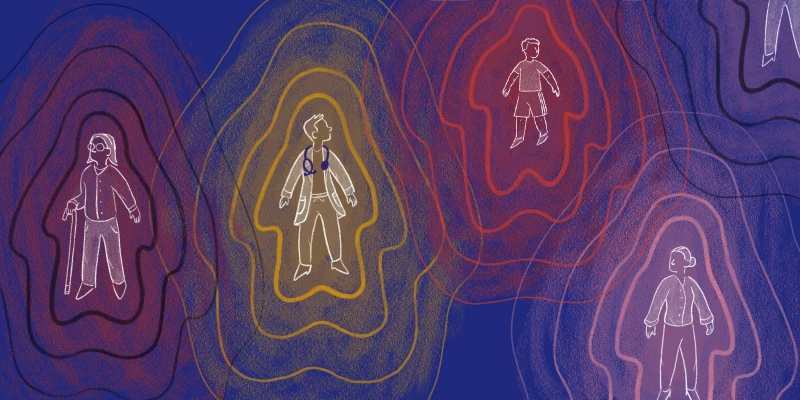The ESMO annual conference in 2023 brought the most remarkable advances in the first-line therapy of metastatic urothelial carcinoma (mUC) since the establishment of platinum-based chemotherapy approximately 3 decades ago. The backdrop is that first-line therapy of mUC recently evolved based on the JAVELIN-Bladder-100 Phase III trial to the administration of switch maintenance avelumab (PD-L1 inhibitor) following stable or responding disease with 4-6 cycles of platinum-based chemotherapy. Two antibody drug conjugates (ADCs), Enfortumab Vedotin (EV, a Nectin4 targeting ADC with monomethyl auristatin E payload) and sacituzumab govitecan (SG, a Trop2 targeting ADC with SN38 topoisomerase-1 inhibitor payload) and a targeted agent, erdafitinib (pan-FGFR inhibitor for those with somatic FGFR2 or FGFR3 activating fusions/mutations) have received approvals in the salvage therapy settings. Combination EV+pembrolizumab received accelerated approval by the US FDA for cisplatin-ineligible advanced UC in April 2023 based on the combined results from cohorts A (Phase Ib) and K (Phase II) of EV103. The remarkable results of the phase III EV302 trial (n=886) comparing EV+pembrolizumab vs. platinum-based chemo in cisplatin-eligible and ineligible patients were now reported in the presidential session of ESMO Congress 2023. EV+pembrolizumab nearly doubled the median progression-free survival (PFS, median 12.5 vs 6.3 mo, HR 0.45; P<0.00001) and overall survival (OS, median 31.5 vs 16.1 mo, HR 0.47; P<0.00001), the dual co-primary endpoints. The confirmed objective response rate (ORR) improved to 68% vs 44%, while complete response (CR) rate also improved to 29.1% vs 12.5%. The median duration of response (DOR) was not reached in the EV + pembrolizumab arm and was 7 months in the chemotherapy arm. There were no new safety signals with the major toxicities being neuropathy, skin rash and hyperglycemia. These results are considered transformative and establish EV+pembrolizumab as standard first-line therapy. However, in the more frail or poorer performance status cisplatin-ineligible patients, the JAVELIN paradigm of platinum-based chemotherapy followed by avelumab maintenance may be more feasible. The paradigm of continuing therapy until toxicities my warrant a re-examination and efforts are underway to evaluate the de-escalation of EV. Although the combination of gemcitabine-platinum with PD1/L1 inhibitors has not improved survival in the previously reported KEYNOTE361 and IMvigor130 Phase III trials, both of these trials suggested that the cisplatin-based backbone may hold promise as a component of a chemoimmunotherapy regimen. Indeed, this suspicion was validated in one of the comparisons of the CHECKMATE901 Phase III trial (n=608). In this component of CHECKMATE901, gemcitabine-cisplatin (GC) was compared with GC + nivolumab. Both coprimary endpoints, OS (HR 0.78; P = 0.02, median 21.7 vs 18.9 mo) and PFS (HR 0.72; P = 0.001, median 7.9 vs 7.6 mo) were better with GC-nivolumab. The ORR was 57.6% vs 43.1% and CR rate was 21.7% vs.8%. The median duration of CR was remarkably 37.1 months with GC-nivolumab and 13.2 months with GC alone. The GC-nivolumab is characterized by a finite duration of chemotherapy (up to 6 cycles), which may confer toxicity advantages. Furthermore, the historical track record of cisplatin-based combination consists of cures in a small fraction of patients, which is reinforced by the extremely durable durable CRs in ~22% of patients receiving GC-nivolumab. Thus, there is an impetus to identify predictive biomarkers for CR when employing GC-nivolumab. Both the EV302 and CHECKMATE901 trials suffer from the absence of maintenance avelumab offered to all patients on the control arm. Nevertheless, it has become clear that only a fraction of patients receive maintenance avelumab in the real world. The Phase III THOR trial recently reported that erdafitinib extended OS vs. taxane or vinflinine chemotherapy (median 12.1 vs. 7.8 months, HR 0.64, p=0.005) in mUC (n=266) with FGFR3/2 activating mutations/fusions who progressed after 1-2 prior treatments including a PD1/L1 inhibitor. At ESMO Congress 2023, the comparison of post-chemotherapy erdafitinib vs pembrolizumab was reported from THOR (n=350). The primary end point, OS, was not met (10.9 vs 11.1 mo), although erdafitinib had numerically longer PFS (4.4 vs 2.7 mo) and numerically higher ORR (40 vs 21.6%) but shorter duration of response (median 4.3 vs 14.4 mo). These data are intriguing and suggest that the activity of pembrolizumab is largely maintained in those with somatic FGFR2/3 mutations/fusions and mUC. Potentially, both agents can be utilized in this molecular subgroup with sequencing. A strategy of more symptomatic patients offered erdafitinib, and others offered pembrolizumab may be pursued. However, the application of these data in the clinic are diminished by PD1/L1 inhibitors moving to the first-line mUC setting. Finally, while these data were not presented at ESMO 2023, the results of the AMBASSADOR Phase III trial are eagerly anticipated given the improved disease-free survival reported in a press release when applying adjuvant pembrolizumab to high-risk muscle-invasive urothelial carcinoma. Potentially, pembrolizumab will become another agent available for this setting following the approval of adjuvant nivolumab a few years ago.
Multiple novel hormonal agents (NHA) (enzalutamide, abiraterone, darolutamide, apalutamide), chemotherapeutic (cabazitaxel, docetaxel, mitoxantrone), radiopharmaceuticals (radium223, Lu-PSMA), PARP inhibitors (olaparib, rucaparib) and immunotherapeutic agents (pembrolizumab for microsatellite instability or tumor mutation burden high tumors, sipuleucel-T) have been added to the therapeutic armamentarium for prostate cancer. The combination of NHAs alone or with docetaxel and androgen deprivation therapy (ADT) have extended overall survival (OS) in metastatic castration-sensitive prostate cancer (mCSPC). Recently, the combination of PARP inhibitors and NHAs (olaparib + abiraterone acetate, talazoparib + enzalutamide, niraparib plus abiraterone) have advanced to the first-line setting for genomically selected (homologous recombination repair alterations for talazoparib + enzalutamide and BRCA1/2 alterations for the other 2 combinations) metastatic castration-resistant prostate cancer (mCRPC). Intriguingly, the combination of olaparib and abiraterone acetate was approved in all mCRPC patients regardless of HRR or BRCA mutations in Europe. Similarly, the PSMAfore Phase III trial (n=468) advanced Lu-PSMA to an earlier pre-docetaxel setting of mCRPC with positive results reported at ESMO Congress. Lu-PSMA prolonged rPFS vs NHA change (HR, 0.41, median 12.02 vs 5.59 mo, p<0.0001) in taxane-naive men with PSMA+ mCRPC, with a favorable safety profile. In a recent press release, cabozantinib combined with atezolizumab demonstrated a significant reduction in the risk of disease progression or death compared with a second NHA in mCRPC, but these data are yet to be presented.
First-line therapy for renal cell carcinoma (RCC) has been transformed over the past few years with the combination of PD1 and CTLA4 (nivolumab plus ipilimumab for poor or intermediate risk disease) and multiple VEGF + PD1/L1 inhibitor combinations (approved across all risk groups). A new class of agents, hypoxia inducible factor (HIF)-2α inhibitors, are poised to enter the clinic following data from the Phase III LITESPARK-005 trial (n=746). Belzutifan was associated with a statistically significant improvement in PFS (HR 0.75, p<0.001) and ORR (21.9 vs 3.5%) vs everolimus in advanced clear cell RCC after immune checkpoint and anti-angiogenic therapies. The safety profile of belzutifan was consistent with prior reports with no new safety signals.
Thus, the annual ESMO Congress 2023 provided multiple advances across urologic cancers. In addition to the aforementioned practice-changing highlights, numerous trials reported promising data for emerging agents and combinations. In this context, the combination of 2 ADCs in the DAD Phase I trial yielded promising activity (ORR 70%) in mUC (EV + SG). Xaluritamig, a bispecific T-cell engager with two STEAP1 binding sites and ARX517, an anti-PSMA ADC conjugated to amberstatin-269, a potent tubulin inhibitor were active in separate trials recruiting pretreated patients with mCRPC. Given the explosion of new agents, the discovery of predictive biomarkers to inform therapy has become more crucial since the delivery of multiple lines of therapy and aggressive multi-agent combinations is likely to reach a ceiling. Clinical trials should be considered a preferred standard of care in order to make unrelenting advances towards identifying curative therapies.
Dr. Sonpavde has received grants from Sanofi, Astrazeneca, Gilead, Helsinn, Lucence, BMS, EMD Serono, Jazz Therapeutics. He has received consulting fees or honorarium from BMS, Genentech, EMD Serono, Merck, Astrazeneca, Sanofi, Seattle Genetics/Astellas, Astrazeneca, Exelixis, Janssen, Bicycle Therapeutics, Pfizer, Gilead, Scholar Rock, G1 Therapeutics, Eli Lilly/Loxo Oncology, Infinity Pharmaceuticals, Lucence Health, IMV, Vial, Syapse, Tempus, Ellipses Pharma, PrecisCa, Primum, Syapse, Servier, Merck, Syncorp. He has also received support for participation in review meetings from Mereo. He has received payment for writings from Uptodate, Practice Update, Onviv. He has also received payment for lectures from BIO – INFORMAÇÃO BRASILEIRA DE ONCOLOGIA Ltda, OLE Forum (Mexico), Seagen, Gilead, Natera, Exelixis, Janssen, Bayer, Aveo.
Image by BRO Vector / GettyImages







